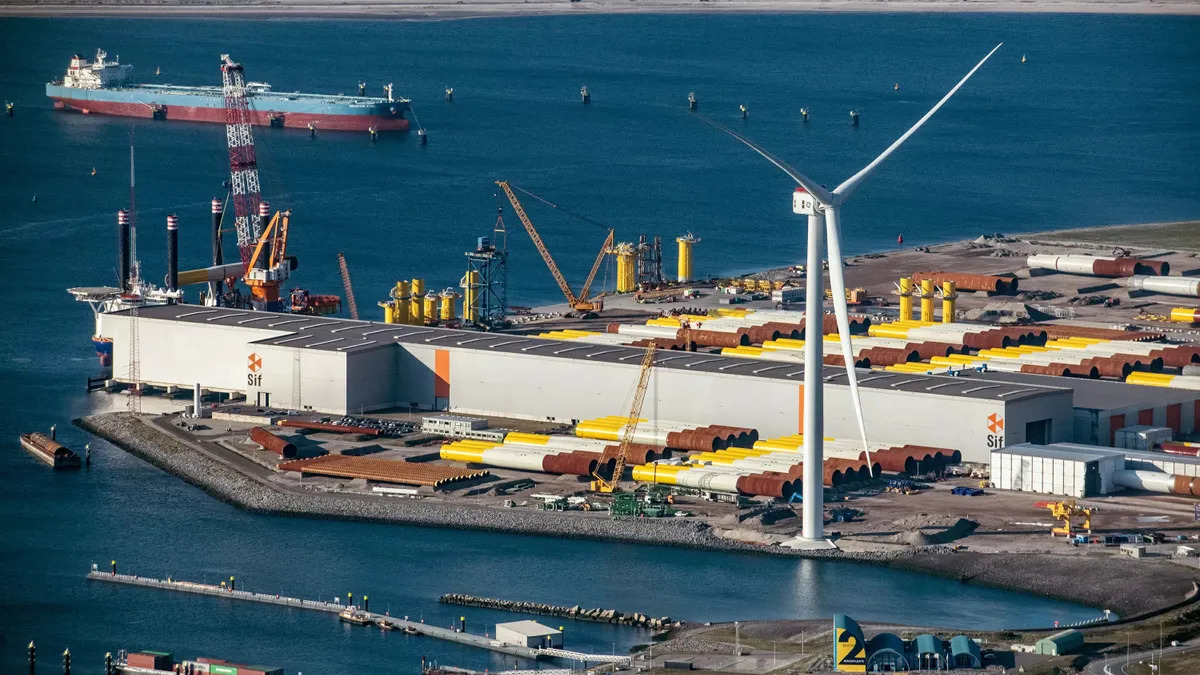Dive Brief:
- The Bureau of Ocean Energy Management issued a call Tuesday for public comment on the potential establishment of offshore wind lease areas in the Gulf of Maine, where the waters are deeper compared to many other East Coast offshore lease sites.
- Offshore wind developers face multiple challenges as the U.S. works toward a goal of deploying 30 GW by 2030, including the added difficulty of establishing farms in deeper waters, a Wednesday webinar hosted by Reuters highlighted.
- But manufacturing, logistical and other challenges can be addressed with “powerful tools” like the Inflation Reduction Act, the Department of Energy’s offshore wind energy lead Jocelyn Brown-Saracino said during the webinar.
Dive Insight:
The Eastern Seaboard of the United States “has been blessed by shallow waters of the Outer Continental Shelf, so the cradle, if you will, of offshore wind in the United States has been shallow water, fixed bottom,” said webinar moderator Adrienne Downey, a principal engineer and country manager, U.S. and Canada, for floating offshore wind developer Hexicon.
However, Downey said, there is an “enormity” of floating wind potential around the U.S. This includes the West Coast’s “sheer drop-off” into the deeper waters of the Pacific and the deep water in the Gulf of Maine.
“That offers a really interesting complexity both in terms of policy frameworks but also the technology frameworks that are going to be required to ensure this initiative’s ultimate success,” she said.
BOEM published its request for comments on Maine’s potential offshore wind development in Wednesday’s Federal Register, asking for input from both potential leasers as well as people who want to provide information on site conditions and resources.
“Are there impact considerations BOEM should be aware of between the different floating wind turbine foundation, mooring, and anchor technologies as they relate to the Gulf of Maine?” the Federal Register notice asked. “BOEM is also interested in information regarding foundation type impacts on potential port infrastructure opportunities and operations and on maintenance practices, specifically when considering greater transmission distance and deeper water depth.”
The agency said that it may or may not offer a lease for a commercial offshore wind project in the specified area, based on the information it receives through government consultations, public participation, and environmental analyses.
There are currently 42 MW of offshore wind operational in the U.S. Across the country, Downey said, there are almost 20 GW under contract, and various state goals push that projected total up to 83.5 GW.
In addition to the challenges posed by the development of the farms, Brown-Saracino said the federal government is also focusing on port development and transmission.
“Transmission is absolutely critical to the success of offshore wind development, and that includes everything from needed onshore upgrades, and as we look to the future, the need for shared transmission offshore,” she said.
Lagging development of transmission and long wait times to connect new projects to the grid has resulted in over 2,000 GW of energy total generation and storage capacity trapped in interconnection queues, according to Lawrence Berkeley National Laboratory. LBNL estimates that 95% of that queued energy is zero-carbon, like wind, solar and battery storage.
Brown-Saracino said the IRA can “provide the US industry with long term certainty with respect to building a sustainable market and supply chain,” incentivizing investment into the industry overall.
“DOE's Loan Program Office has additional resources to provide loan guarantees, both for offshore wind projects themselves but also transmission and manufacturing,” she said. “We've got some powerful tools at our disposal to help the industry move forward, both in the short term and the long term.”















